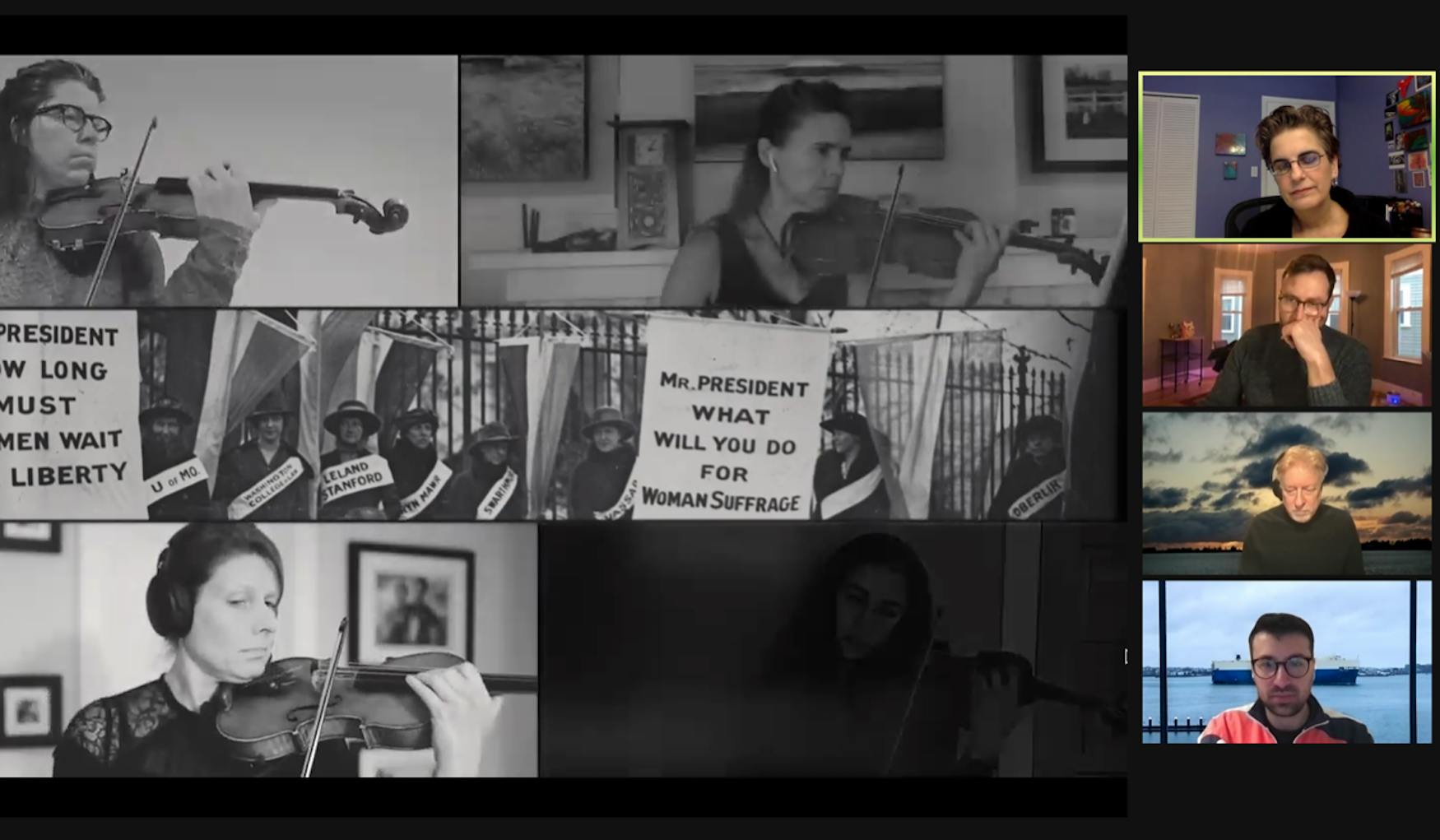The life of a freelance composer: Music meets business
The work of freelance music composers is not as solitary as it may sound. They collaborate with institutions, theatres, and individuals. They work on solo pieces, operas, orchestra pieces, chamber pieces, and more. They have a flexible working schedule for exploring and envisioning creativity in music, yet they live a busy lifestyle managing their music careers and businesses at the same time. Last Thursday, Feb. 4, the Music department invited freelance composer Stacy Garrop to share experiences and reflections on her career in the first Music Department Colloquium of the semester.
Garrop’s freelance work is founded on a tightly knit network that she built during college and over her career as a professor at Roosevelt University. Throughout her career, Garrop not only worked repeatedly with musicians and friends with whom she collaborated in the past but also continuously expanded and developed new connections. She told the students that it was important to start looking for collaboration opportunities early on and to reach out to various kinds of people. For example, it would be helpful to reach out and meet with potential co-workers. She also encouraged aspiring composers to promote themselves by building accessible professional websites that list their music pieces and contact information. Garrop stressed the importance of creating a “personal mission statement” to guide students through short-term plans and to set up goals for future professional development.
Garrop continued to collaborate with various orchestras and universities throughout her higher education and later into her career. She quit her tenureship after teaching for 16 years at Roosevelt University and went on to launch her freelance career. The composer told the audience that a full-time tenureship at the university often comes with committee work, course load, and even administrative tasks, which greatly limit time for music composing. The time conflict and the awakened dream rooted deeply in her pushed her to become a freelance composer.
In addition to discussing her personal experiences and insights, Garrop also shared some of the work she recorded during the pandemic, catering to the special time we are all experiencing. She composed the piece “The Solitude of Stars” in more than 20 versions for different musical instruments. The song, Garrop described, is a simple piece that could be practiced more easily when large-scale music was hard to perform under COVID-19 safety measures.
Multi-media music performance is another innovative means of composing that Garrop adopted during the pandemic. She collaborated with opera singer Keanon Kyles from the Chicago Opera Theatre in “Meditation for the Inner Storm.” In a recorded video of the piece, Kyles sits solemnly in all black with his fingers swirling around the edge of the glass to make it sing. His voice beautifully performed the inner struggles of a person during a panic attack — the aggregated tension, confusion and the return to tranquility.
With new sound technology, Garrop also took on the challenge of organizing large-scale online performances, including a piece called “The Battle for the Ballot.” With the help of an audio engineer, the orchestra members were able to record separately and their sound tracks were later joined together seamlessly. Garrop confessed that she never thought such a large-scale performance by 60 musicians in a 16-minute piece would be possible considering the great complexity of mixing the colors of different musical instruments together.
At the end of the event, Garrop shared some guidelines she had compiled over the years in composing. She concluded with “10 characteristics” and “6 things to do RIGHT NOW,” which she kindly shared with Brandeis’ students. With early preparation and detailed career planning, Garrop hopes that all the composers succeed in their music careers.



Please note All comments are eligible for publication in The Justice.